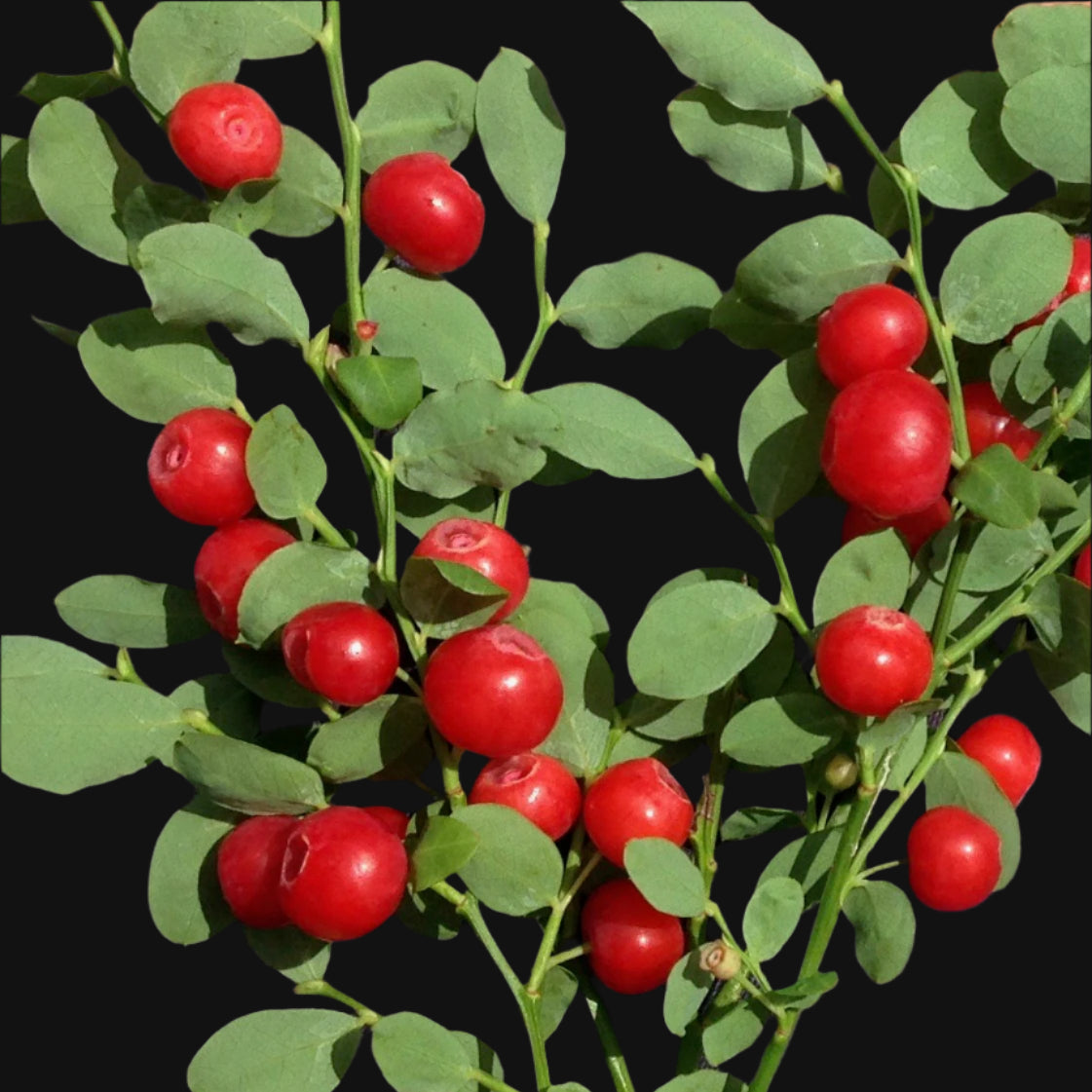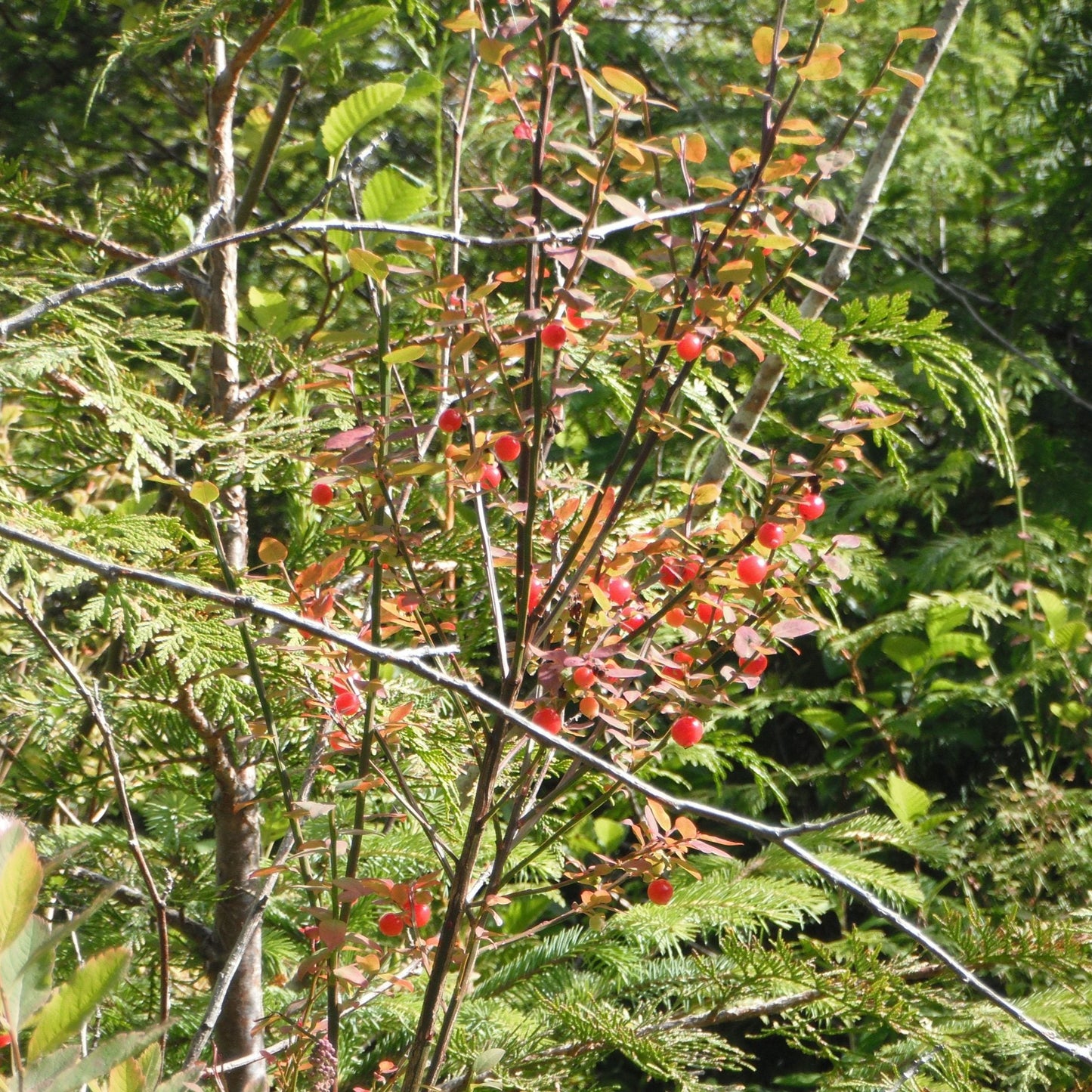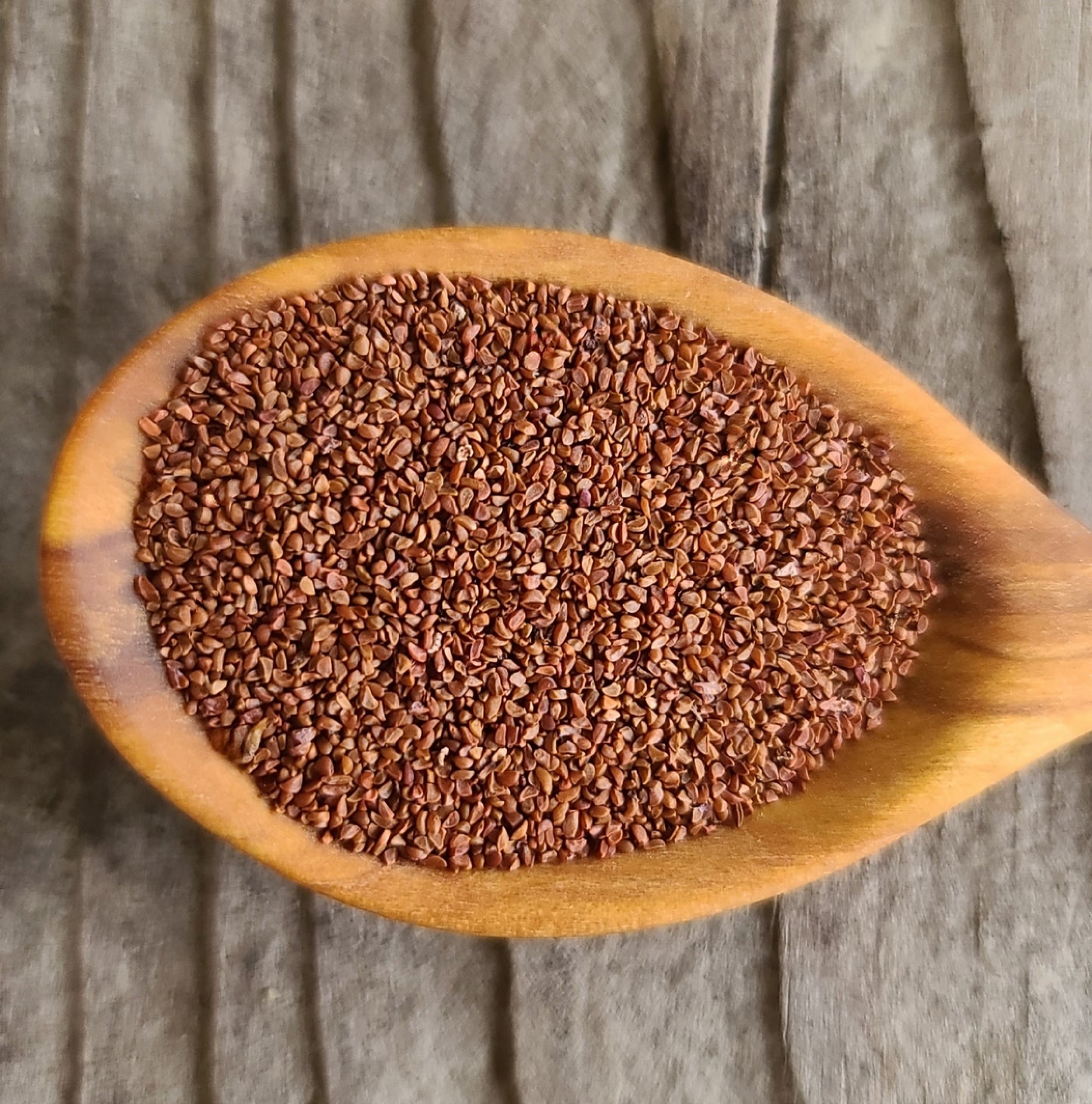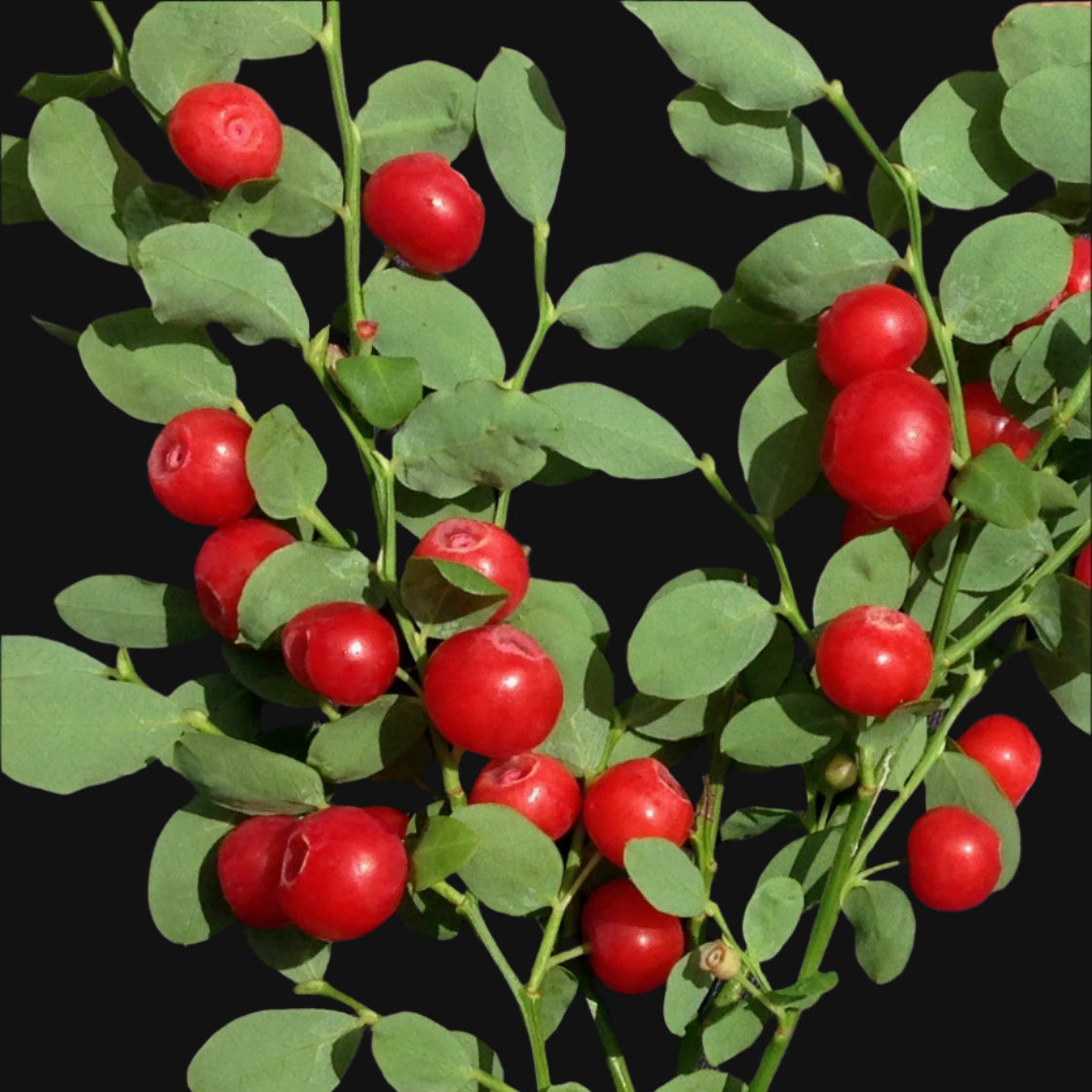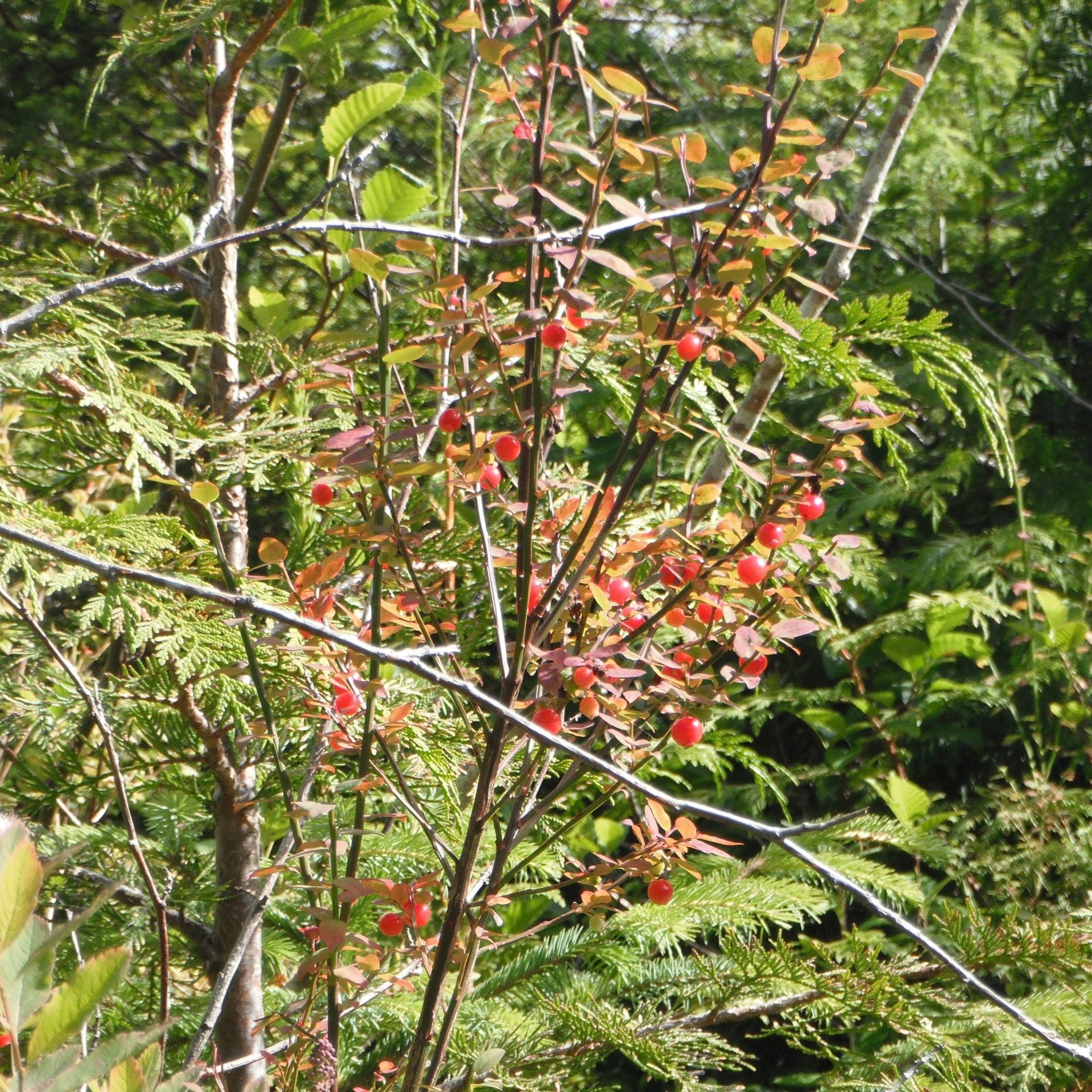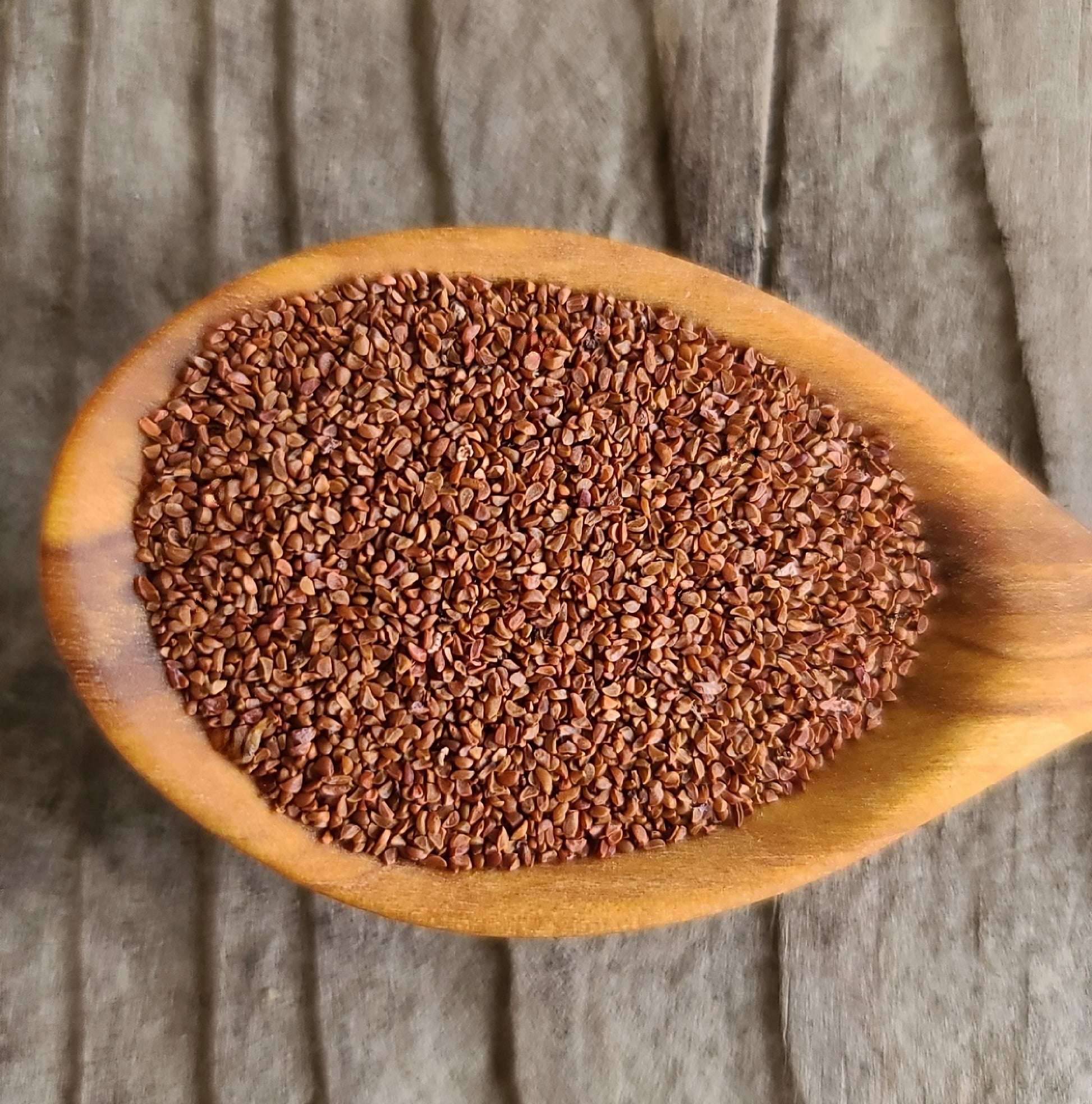Seed the Change!
Seeds of Diversity Canada estimates that nearly 75% of vegetable varieties have disappeared. 25% of native plants are at risk and diversity in flower gardens is shrinking.
We are working to restore the biodiversity that was once common in gardens, farms, and nature around Canada!
Red Huckleberry
Red Huckleberry
Vaccinium parvifolium
544 in stock
Height 1.5-3m (5-10ft) Spread 1.2-2.4m (4-8ft)
- Weight: 1g / 0.04oz
- Product Count: 100
- Growing Difficulty: Moderate
- We ship Wednesdays !
Couldn't load pickup availability
All our seeds are 100% Canadian Grown, Processed-by-Hand, Non-GMO, Certified Organic, and Open Pollinated. From our 10-acre Seed Farm in Metchosin, BC since 2004.
Quick Notes
- Native BC shrub producing tart red berries
- Bright green stems and pink buds are decorative in winter
- Thrives in moist, humus-rich, woody soil
- Early flowering supports spring pollinators
- Long-lived and highly ornamental
About Red Huckleberry
Red Huckleberry (Vaccinium parvifolium) is a stunning BC native plant that belongs to the blueberry family. Known for its bright green stems and tart, vibrant red berries, this long-lived deciduous shrub offers beauty and functionality year-round. It thrives in moist, humus-rich soils, especially in areas with plenty of woody debris, making it well-suited to naturalised woodland gardens. In spring, early blossoms provide nectar for pollinators, while its red berries ripen later and are enjoyed by both birds and people. During the winter months, the plant’s stems and buds make a striking addition to floral arrangements.
Where Can You Grow Red Huckleberry?
Red Huckleberry does best in Zones 6-9. It prefers partial to full shade and moist, well-drained soils rich in organic matter. Ideal for woodland edges, shaded gardens, and forest understories.
History and Historical Uses
A traditional staple of coastal Indigenous diets, Red Huckleberry has long been valued for its nutritional, cultural, and medicinal uses. Berries were eaten fresh, cooked, or dried into cakes, while the wood and branches were often used in ceremonial contexts. The plant continues to play a role in native restoration efforts and ecological landscaping.
Canadian Zone Information
Zones 8-9: Direct seed in autumn or transplant nursery-grown plants in early spring.
Zones 6-7: Start seeds indoors in late winter and transplant in spring after frost.
Zones below 6: May require protection or greenhouse support to overwinter successfully.

How to Grow and Harvest Red Huckleberry
Planting: Best grown from nursery starts or seed in humus-rich, acidic soil.
Watering: Maintain consistent moisture without waterlogging; mulch to retain soil humidity.
Harvesting: Harvest tart berries in summer once fully coloured; best used cooked or dried.
Maintenance: Avoid pruning heavily; maintain a shady, debris-rich environment.
Seed Saving Tips for Future Supply
Let Berries Ripen: Allow berries to fully ripen on the shrub before harvesting.
Extract Seeds: Mash berries gently and rinse in water to separate pulp from seeds.
Dry and Store: Dry seeds on paper towels for several days.
Storage: Keep in a cool, dry location. Seeds may require cold stratification for germination.
Certified Organic By
Islands Organics Producers Association (Cert#1962)
